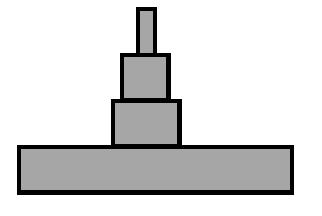Biology Quarterly Test 3
(127).webp)
This test explores key concepts in evolutionary biology, focusing on macroevolution, Darwin's theories, and genetic comparisons across species.
Questions and Answers
- 1.
What change to the concept of macroevolution did Neo-Darwinism make?
- 2.
What age-old concept was Darwin able to dispel with his research?
- 3.
How would an adherent to punctuated equilibrium explain the lack of intermediate links in the fossil record?
- 4.
Does the study of structural homology provide evidence for or against macroevolution? Why?
- 5.
Did Darwin ever recant his scientific beliefs?
- 6.
The amino acid sequences in the protein called cytochrome C are studied for many different organisms. The sequences are all compared to that of a horse. According to the macroevolution hypothesis, which should be more similar to the cytochrome C of a horse: the cytochrome C of a fish, the cytochrome C of a giraffe, or the cytochrome C of a bacterium?
- 7.
If the data discussed in problem #6 were actually analyzed, would the result be as predicted by the macroevolution hypothesis?
- 8.
Give two examples of mutualism in creation.
- 9.
What is the principal means by which oxygen is taken from the air?
- 10.
What is the principal means by which oxygen is restored to the air?
- 11.
Between which two trophic levels is the smallest amount of energy wasted?
- 12.
Is global warming occurring now?
- 13.
Are the vast majority of animals vertebrates or invertebrates?
- 14.
How do sponges get their prey?
- 15.
What roles do amebocytes play in the life of a sponge?
- 16.
Why do cnidarians not need respiratory or excretory systems?
- 17.
If a jellyfish reproduces sexually, what form is it in?
- 18.
What will happen to an earthworm if its cuticle gets dry?
- 19.
If a flatworm has complex nervous and digestive systems, is it most likely free-living or parasitic?
- 20.
Name the five common characteristics among the arthropods.
- 21.
What happens when a crayfish loses a limb?
- 22.
Why do arthropods molt?
- 23.
What five characteristics set arachnids apart from the other arthropods?
- 24.
What four characteristics set insects apart from the other arthropods?
- 25.
Why don’t insects have respiratory systems?
Quiz Review Timeline +
Our quizzes are rigorously reviewed, monitored and continuously updated by our expert board to maintain accuracy, relevance, and timeliness.
-
Current Version
-
Nov 09, 2023Quiz Edited by
ProProfs Editorial Team -
Mar 07, 2009Quiz Created by
22luke
How Well Do You Know Molecular Biology Techniques?
How Well Do You Know Molecular Biology Techniques?
Quiz: Test Your Knowledge on Human Biology - Chapter 7
Quiz: Test Your Knowledge on Human Biology - Chapter 7
Quiz: Test Your Knowledge On Cell Differentiation!
Quiz: Test Your Knowledge On Cell Differentiation!
 Back to top
Back to top



